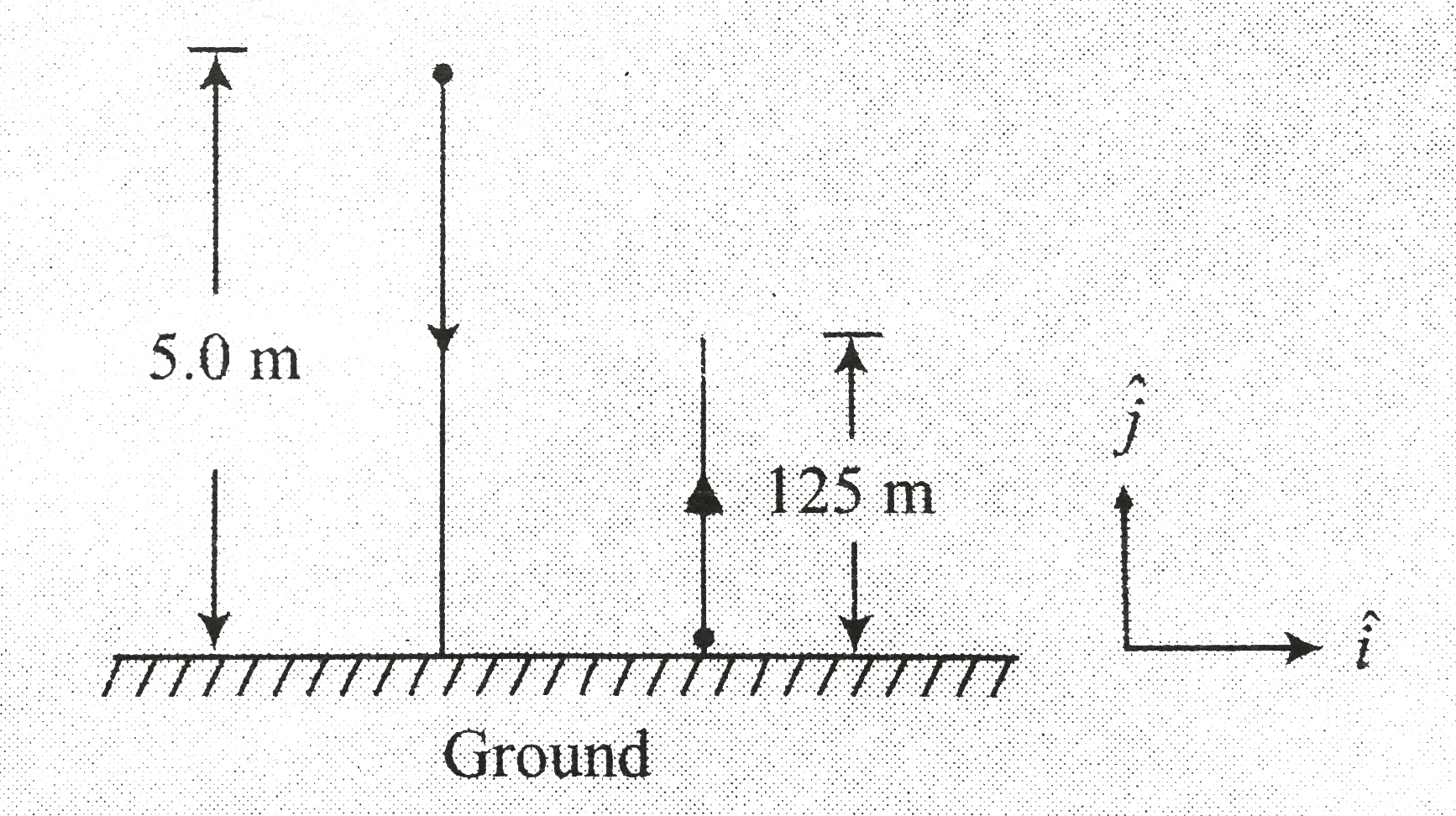A rubber ball falls from a height h and rebounds to a height h/2. A rubber ball of double the mass falling from the same height h rebounds to a height
h
h/2
3h/4
2h
The correct Answer is:B
To solve the problem, we need to analyze the behavior of the rubber balls when they fall and rebound.
1. Understanding the Problem:
- We have a rubber ball of mass m that falls from a height h and rebounds to a height of h2.
- We are asked to find the rebound height of another rubber ball with double the mass 2m when it falls from the same height h.
2. Key Concept - Coefficient of Restitution:
- The coefficient of restitution (e) is a measure of how much kinetic energy remains after a collision. It is defined as the ratio of the velocity after the collision to the velocity before the collision.
- The rebound height of a ball is directly related to the coefficient of restitution and the height from which it falls.
3. Rebound Height Calculation:
- For the first ball (mass m), it falls from height h and rebounds to height h2. This means that the coefficient of restitution e can be calculated as follows:
e=√Rebound HeightInitial Height=√h2h=√12=1√2
4. Applying the Same Concept to the Second Ball:
- For the second ball (mass 2m), it also falls from the same height h. Since the coefficient of restitution is a property of the material and does not depend on the mass of the ball, the rebound height will be the same as for the first ball.
- Therefore, the rebound height for the second ball will also be:
Rebound Height=e2⋅h=12⋅h=h2
5. Conclusion:
- The rubber ball of double the mass 2m will rebound to the same height h2 as the first ball of mass m.
Final Answer:
The rubber ball of double the mass will rebound to a height of h2.
---
- We have a rubber ball of mass m that falls from a height h and rebounds to a height of h2.
- We are asked to find the rebound height of another rubber ball with double the mass 2m when it falls from the same height h.
- The coefficient of restitution (e) is a measure of how much kinetic energy remains after a collision. It is defined as the ratio of the velocity after the collision to the velocity before the collision.
- The rebound height of a ball is directly related to the coefficient of restitution and the height from which it falls.
- For the first ball (mass m), it falls from height h and rebounds to height h2. This means that the coefficient of restitution e can be calculated as follows:
e=√Rebound HeightInitial Height=√h2h=√12=1√2
- For the second ball (mass 2m), it also falls from the same height h. Since the coefficient of restitution is a property of the material and does not depend on the mass of the ball, the rebound height will be the same as for the first ball.
- Therefore, the rebound height for the second ball will also be:
Rebound Height=e2⋅h=12⋅h=h2
- The rubber ball of double the mass 2m will rebound to the same height h2 as the first ball of mass m.
The rubber ball of double the mass will rebound to a height of h2.
Topper's Solved these Questions
- LAWS OF MOTIONBOOK - AAKASH SERIESCHAPTER - LAWS OF MOTIONEXERCISE - EXERCISE - II
136 Videos
- LAWS OF MOTIONBOOK - AAKASH SERIESCHAPTER - LAWS OF MOTIONEXERCISE - PRACTICE EXERCISE
106 Videos
- LAWS OF MOTIONBOOK - AAKASH SERIESCHAPTER - LAWS OF MOTIONEXERCISE - Application
6 Videos
- GEOMETRICAL OPTICSBOOK - AAKASH SERIESCHAPTER - GEOMETRICAL OPTICSEXERCISE - ADDITIONAL PRACTICE EXERCISE (LEVEL-II PRACTICE SHEET (ADVANCED) INTEGER TYPE QUESTIONS)
10 Videos
- LOGIC GATESBOOK - AAKASH SERIESCHAPTER - LOGIC GATESEXERCISE - Exercise (Very Short Answer)
10 Videos
Similar Questions
A rubber ball of mass 50 g falls from a height of 5m and rebounds to a height of 1.25 m. Find the impulse and the average force between the ball and the ground if the time for which they are in contact was 0.1s

View SolutionA particle falls from a height h and rebounds to a height h1(h1<h), then which of the graph represents the motion correct ?
View SolutionA body of mass m falls from a height h1 and rises to a height h2. The magnitude of the change in momentum during the impact with the ground.
View SolutionA metal ball hits a wall and does not rebound whereas a rubber ball of the same mass on hitting the wall the same velocity rebounds back. It can be concluded that–
View SolutionA ball falls on the ground fro a height of 2.0 m and rebounds up to a height of 1.5 m. Find the coefficient of restitution.
View SolutionA ball dropped from a height of 2 m rebounds to a height of 1.5 m after hitting the ground. Then fraction of energy lost is
View SolutionA steel ball is dropped on a hard surface from a height of 1m and rebounds to a height of 64cm. The maximum height attained by the ball after nth bounce is (in m)
View SolutionA ball is dropped on the floor from a height of 10m. It rebounds to a height of 2.5 m if the ball is in contact with floor for 0.01 s then the average acceleration during contact is nearly
View SolutionA ball is dropped on the floor from a height of 10m. It rebounds to a height of 2.5 m if the ball is in contact with floor for 0.01 s then the average acceleration during contact is nearly
View SolutionA ball is dropped from a height of 5 m, if it rebound upto height of 1.8 m, then the ratio of velocities of the ball after and before rebound is :
View Solution
